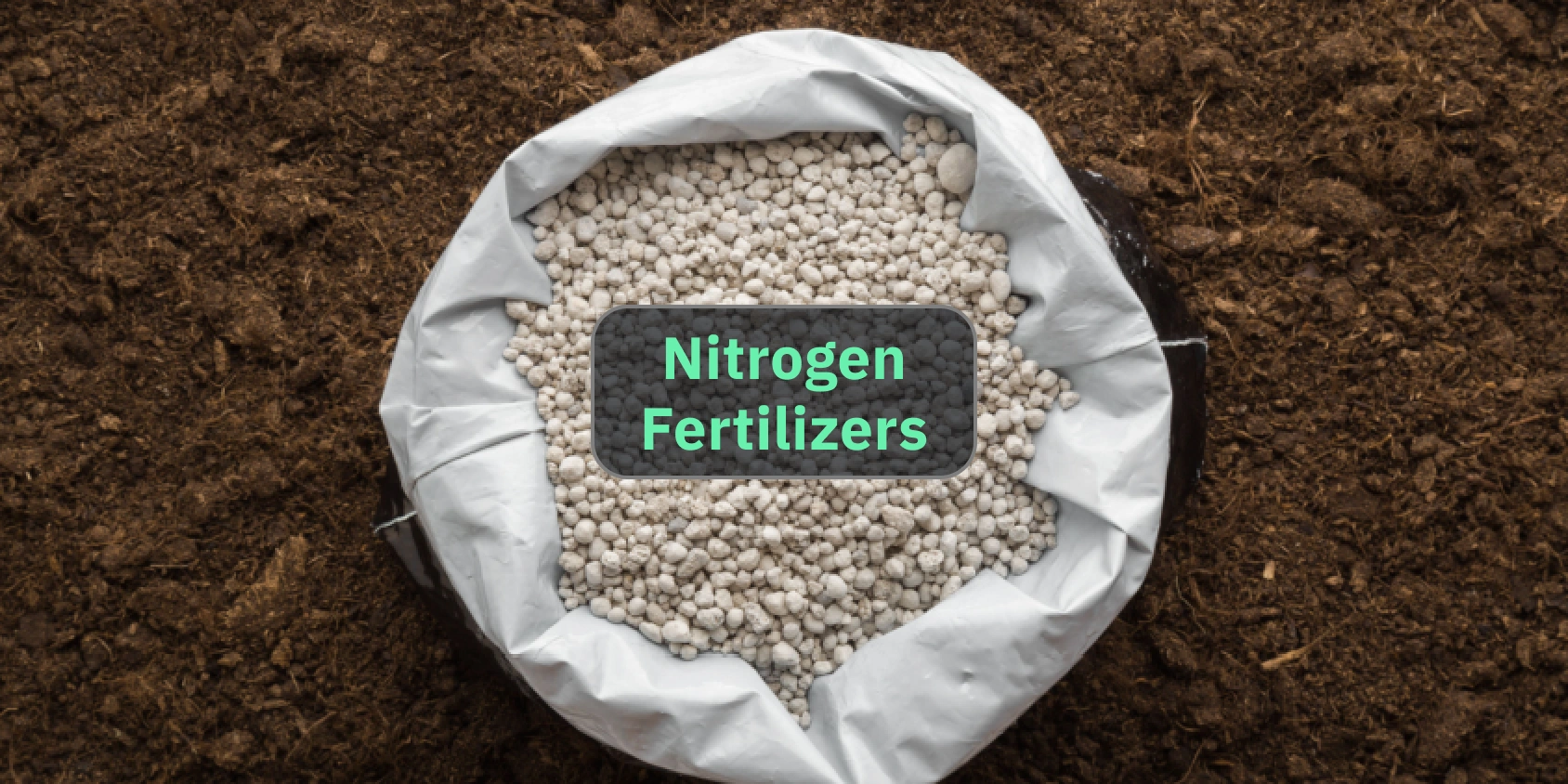
Nitrogen Fertilizers: Why And How To Apply Sustainably
Nitrogen fertilizers have become an indispensable tool in the modern farmer’s arsenal, but their use is not without its challenges. While they promote plant growth, enabling farmers to maximize harvests, their improper usage can lead to environmental hazards like groundwater contamination and greenhouse gas emissions. Since nitrogen fertilizer overapplication not only wastes resources but also poses agricultural and ecological risks, striking the right balance is crucial. This article delves into the intricacies of nitrogen-based fertilizers so that farmers can harness their benefits while mitigating potential drawbacks. Equipped with this knowledge, growers can cultivate crops that are both sustainable and abundant.
What Is A Nitrogen Fertilizer?
Nitrogen fertilizer is a nitrogen-rich substance, either solid or liquid, widely used in agriculture to promote crop growth and unlock higher yields. Nitrogen (N) is a common component of fertilizers because it is essential for all plants to produce energy in their cells. There is not enough nitrogen in our soils to fully supply crop demands, particularly when you consider how much food the globe needs to feed everyone. To fill that shortfall, farmers all around the world rely on nitrogen in fertilizers (mostly synthetic).
There are two types of nitrogen fertilizers based on their sources:
- Organic, or natural. These are N sources, such as manure, compost, blood and feather meal, and fish emulsion, created naturally through fermentation or composting.
- Synthetic, or chemical. They are produced by transforming nitrogen gas (N2) into nitrogen-based products, such as nitrates and ammonia. While the exact percentage of N in synthetic fertilizers might vary greatly depending on their intended use, a typical range is 26–32%.
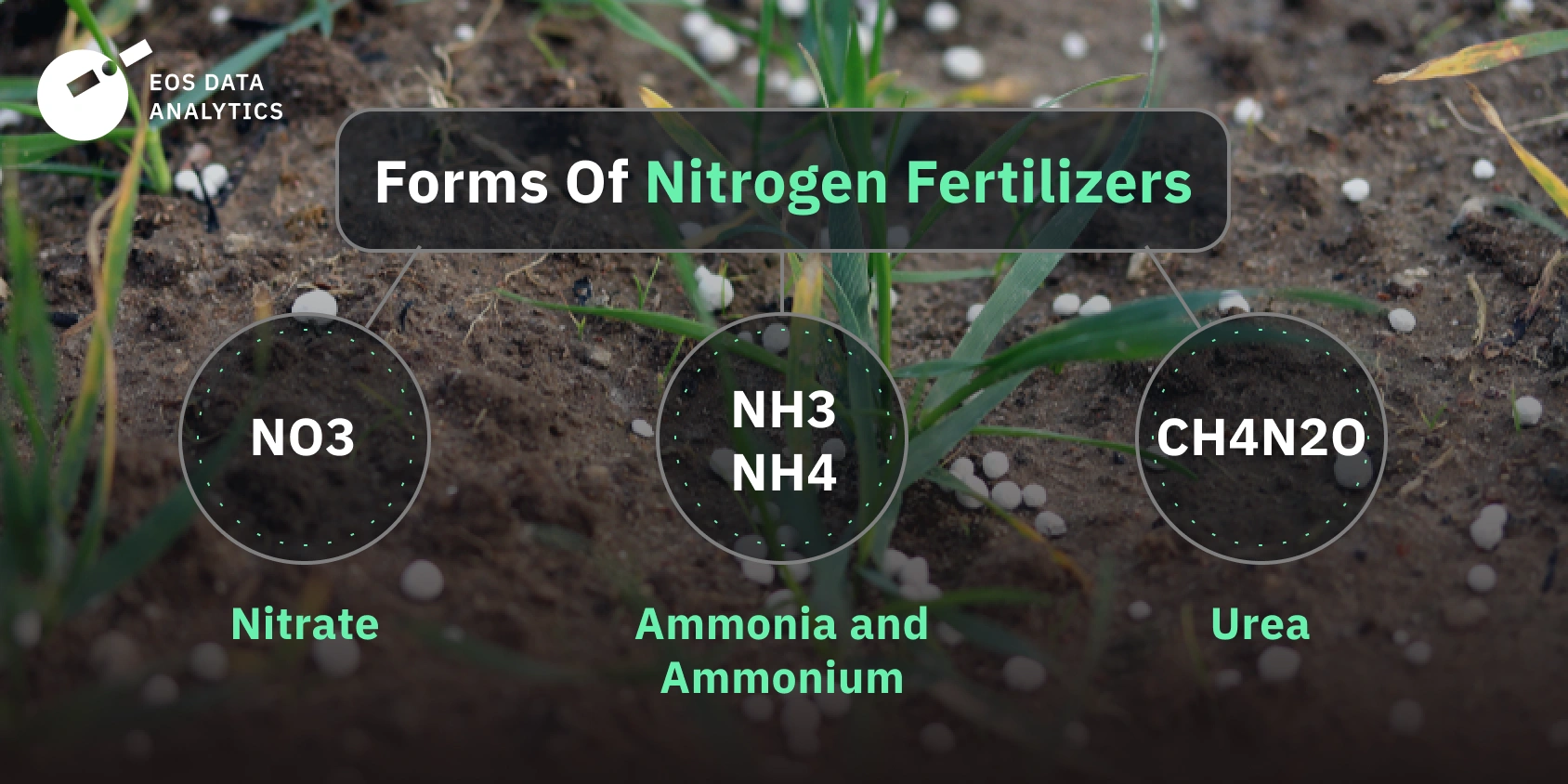
Forms On Nitrogen Fertilizer
Nitrogen fertilizers typically come in one of these forms: nitrate (NO3), ammonia (NH3), ammonium (NH4), or urea (CH4N2O). Every form has its own unique properties that dictate the specific conditions and methods for using it. Now, we’ll examine these forms and their characteristics more closely.
Nitrate (NO3)
Nitrate is the most mobile type because of its dissolving nature and lack of attachment to substrate particles. N loss and leaching are potential outcomes of this mobility . When it’s dry, water evaporates from the soil, which might cause nitrates to rise to the surface and build up there. However, once nitrates seep below the root zone, they are unlikely to migrate upward, so plants may lose large amounts of nitrogen fertilizer.
You can optimize nitrate applications in your crops with the help of EOSDA Crop Monitoring. To achieve this, use our platform to collect soil moisture data from both the surface and the root zone. If you’re looking for more advanced data, check out our soil moisture analytics solution for seasoned crop producers.
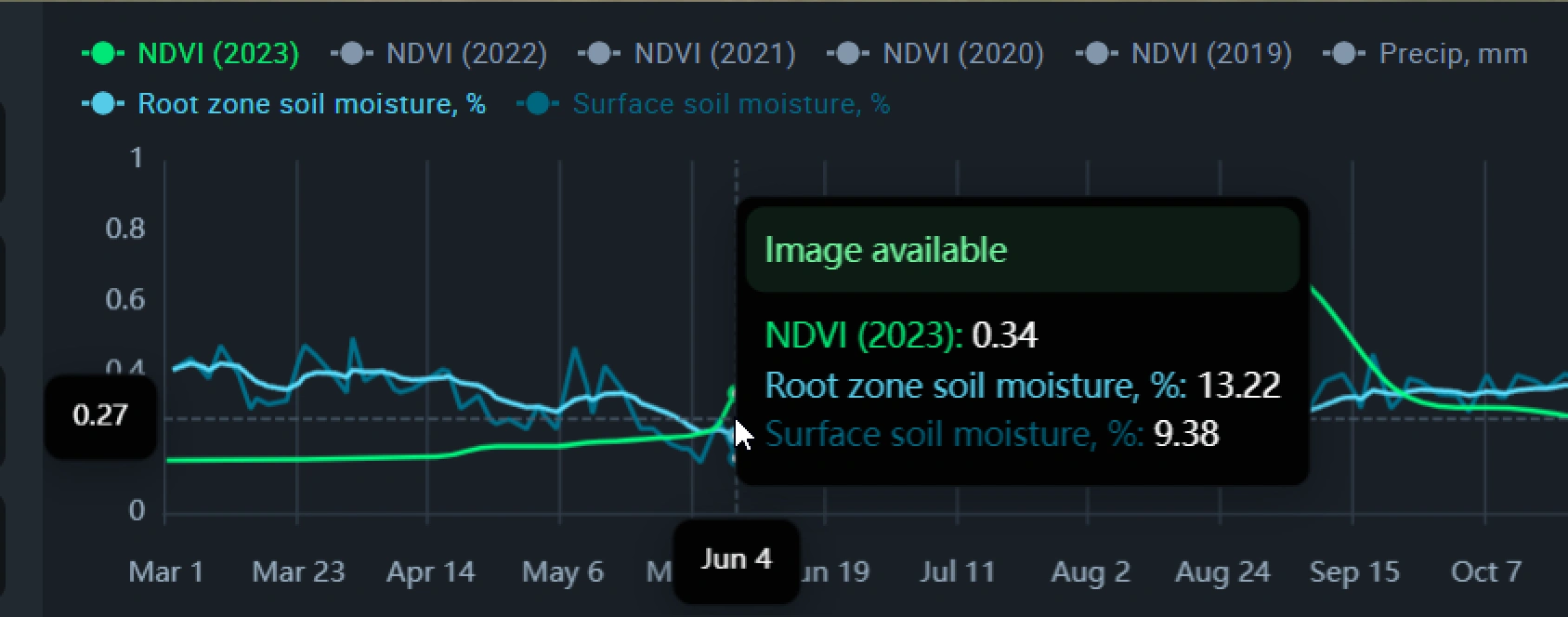
Ammonia (NH3) And Ammonium (NH4)
Plants can easily access ammoniacal forms of nitrogen. Despite dissolving in water, they attach to organic particles in the soil and rarely leak. Because ammonia in water can rapidly evaporate into the atmosphere, injecting it beneath the soil’s surface is necessary. Eliminating the use of ammoniacal nitrogen fertilizers in cold, overcast growing environments might help crop producers avoid ammonium toxicity-related issues.
In most soils, nitrification chemical reactions quickly convert ammonium to nitrate. Because of this, N mobility is greatly increased, leading to the plant losing up to half of the nutrients available through nitrate leaching and nitrous oxide emissions . A soil pH of 7, 50% moisture content, and a temperature of 80°F (26°C) are the ideal conditions for nitrification. A pH of 5.5 and lower, waterlogging, and a temperature lower than 40°F (4°C) interfere with this process. Management practices that reduce nitrification should be implemented for increasing nitrogen fertilizer effectiveness and minimizing losses.
Urea (CH4N2O)
Before crops absorb urea, it might pass through three stages of transformation:
- urea is converted to ammonia by soil enzymes;
- the reaction of ammonia with water produces ammonium;
- soil microbes help ammonium transform into nitrate.
If urea fails to transform into ammonia and ammonium, it can leach because it is extremely soluble in its original form. However, it takes only 2-4 days for urea to convert to ammonia under ideal soil moisture and warmth. Even if temperatures drop below freezing, the conversion process does not stop. So, leaching is quite rare in real-world scenarios.
To ensure the best results with urea and other forms of nitrogen fertilizers, review historical and forecasted weather data for your field in EOSDA Crop Monitoring. It will allow you to recognize climate patterns and anticipate upcoming weather events, which may influence how effectively plants uptake the nutrient.
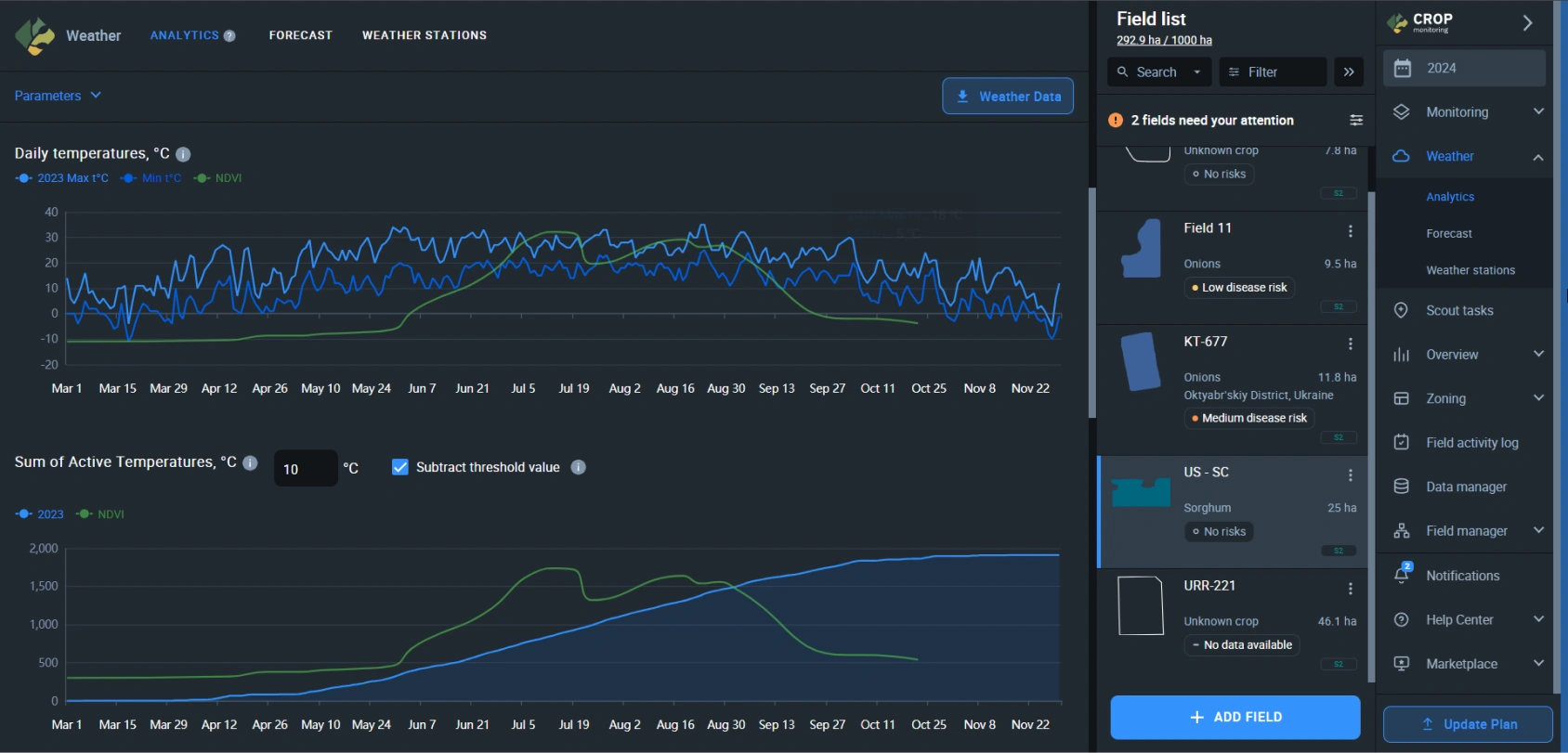
Considerations For The Use Of Nitrogen Fertilizers In Agriculture
To get the most out of fertilizers with nitrogen, use them wisely. Otherwise, especially if there is excessive fertilization, the result may be a significant decrease in yield rather than an increase. First, take into account the following:
- Liquid fertilizing products are most effective when applied during active plant growth, as plants readily absorb them. However, improper or excessive application may lead to leaks and scorching of the plant roots.
- Dry or pelleted fertilizing products are best suited for less nutrient-hungry periods. But they might rest on the ground, making their volatile compounds more likely to evaporate.
Before you apply nitrogen-based fertilizers, consider some other key considerations.
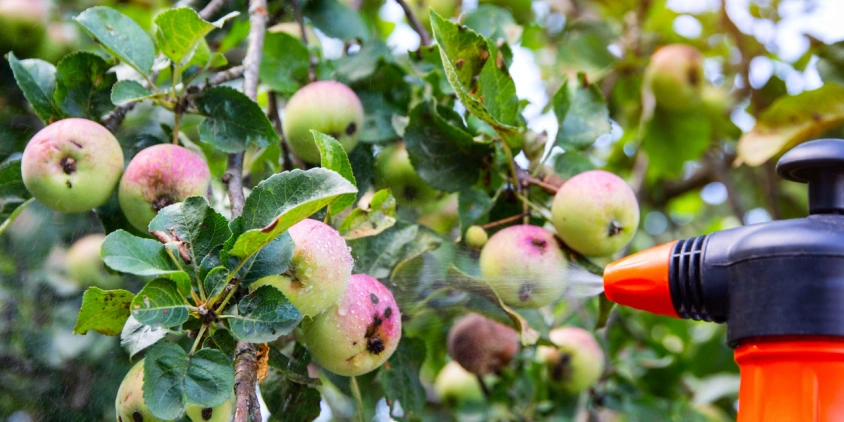
What Type Of Nitrogen-Based Fertilizer To Use
There is not one best fertilizer type for providing nitrogen to crops. But avoiding nitrate fertilizers and instead using ammonium and urea can reduce atmospheric emissions of nitrous oxide (N2O), particularly in soils saturated with water. If we want to make crop production more sustainable, more N should ideally come from organic fertilizers like compost, manure, and legume residues. Keep in mind, however, that an overabundance of organic material may accelerate N loss. One of the most practical approaches is to increase the use of legume residues as a nitrogen source, resulting in a reasonable nutrient rate.
Legumes fix nitrogen from the air on their own. Plants gradually release N into the soil while growing, and any remaining N after harvesting and/or incorporating legume residues enhances soil health.
How Much Nitrogen Fertilizer To Apply
For farmers aiming for precise nitrogen fertilizer application, soil testing is a good place to start. Take soil samples at depths ranging from 0–4 inches (0–10 cm), 4–24 inches (10–60 cm), and even 24–35 inches (60–90 cm) if the roots grow that deep.
To figure out the recommended nitrogen fertilizer application rate, subtract the soil’s measured N supply (based on a soil test) from the crop’s estimated nutrient demand. Remember that crop type and growth stage, soil quality, and farming system all play a role in determining the optimal application rate. The vegetation maps provided by EOSDA Crop Monitoring make it easy for crop growers to differentiate field zones according to vegetation levels. This information can assist in implementing variable rate nitrogen fertilizer applications adjusted to the specific requirements of each area.
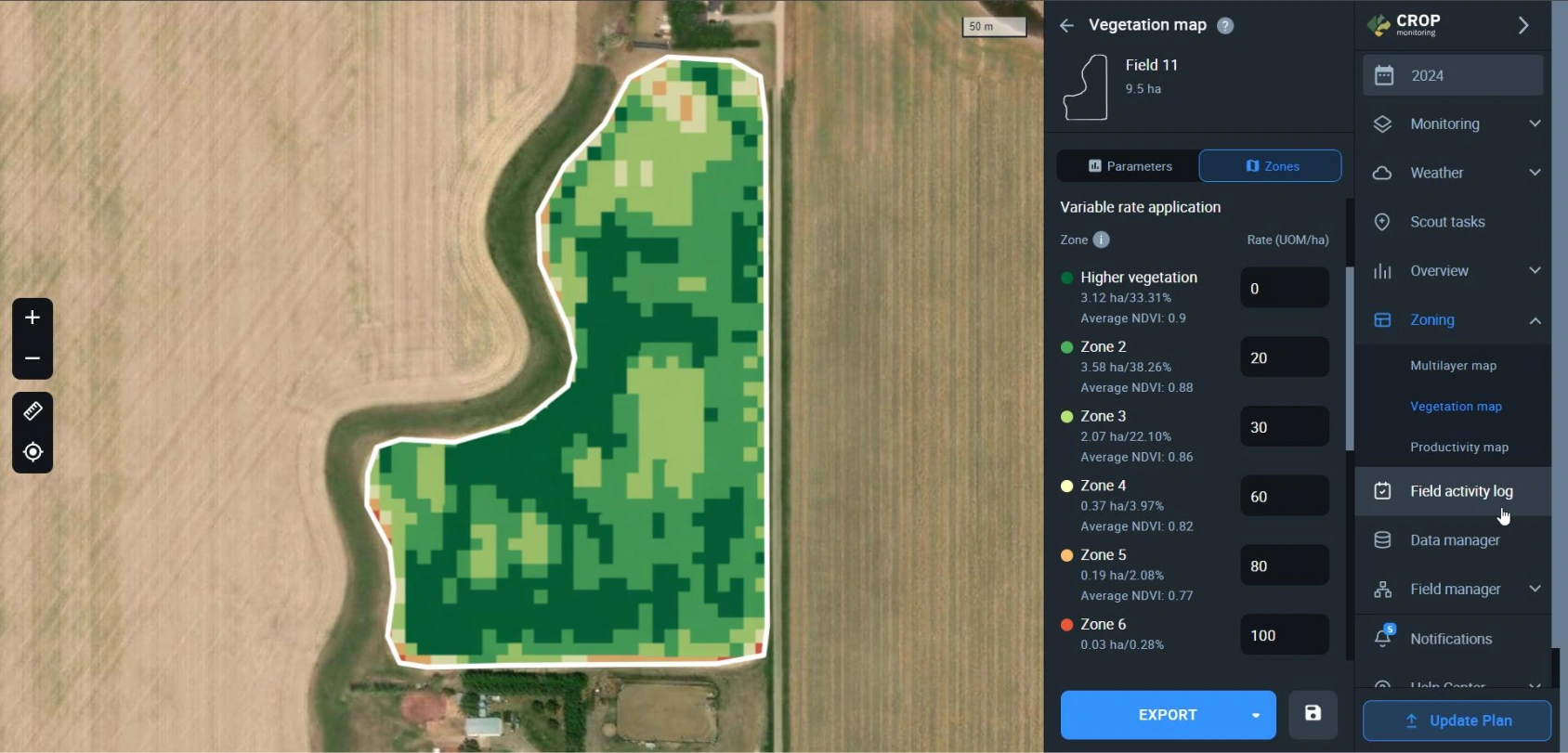
When To Apply Nitrogen Fertilizer
By adapting the timing of your N fertilizer treatments to your crops’ changing needs, you may increase nutrient uptake and decrease fertilization expenses. Nitrogen-based fertilizers don’t perform effectively when provided in advance as a reserve when crops are young and their nitrogen needs are low. Most plants need just under 20% of their entire nitrogen demand by the time they blossom.
To enhance N uptake, fertilize crops during their nutrient-efficient growth stages (given that there is enough rainfall thereafter). To prevent nitrogen fertilizer leaching, never fertilize soils that are already waterlogged or are expected to become so soon, such as before the forecasted downpour. Also, minimize the duration of land fallow when shifting from long-term grazing to croplands.
During most stages of plant growth, the NDVI index, which measures vegetation density, is used to decide which areas of the field require less or more fertilizing. At the beginning of the growing season, when the soil is partly exposed, MSAVI, the only index that removes soil effects from vegetation density calculation, is particularly helpful; by the middle or end of the season, the NDRE index becomes more effective. As the season progresses, you can use the ReCl index—which reflects chlorophyll levels in leaves—to pinpoint areas of the field that may benefit from additional fertilizer applications. In case you need them, we can also provide tailor-made indexes crafted specifically for your tasks.
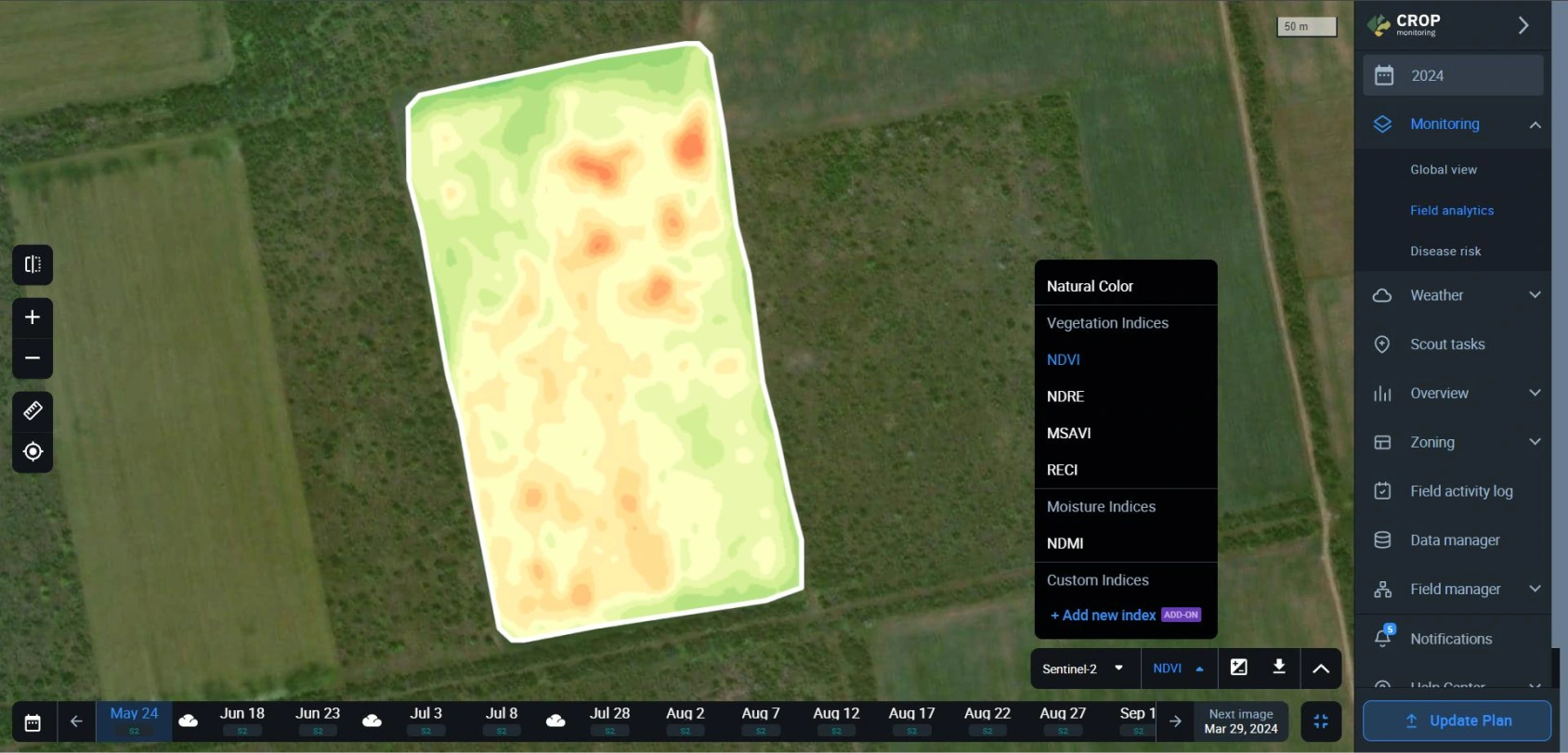
EOSDA Crop Monitoring
Offering high-resolution satellite images for fields analytics to monitor crops health remotely!
Where To Place Nitrogen Fertilizer
Plants can absorb nitrogen more easily if fertilizer is placed close to the root zone or in places where rain can carry it there. Deep application is particularly critical in erosion-prone soils. This will prevent nitrogen from volatilizing or adhering to the topsoil.
It is also important to employ cultivation techniques that increase crop water and nitrogen uptake. Surface drainage, minimal tillage, and controlled traffic can reduce nitrogen losses. Another advantage of implementing these approaches is enhanced soil structure, which in turn increases yields.
Advantages And Disadvantages Of Using Nitrogen Fertilizers
Nitrogen fertilizers are of interest to every farmer since they promote healthy plant growth and boost yields. However, there may be environmental costs associated with their industrial production and overuse. Gain a better understanding of nitrogen fertilizer benefits and risks so you can maximize the former and minimize the latter.
What Are The Benefits Of Nitrogen Fertilizers?
Nitrogen-based fertilizers, whether organic or synthetic, come in a wide variety of forms, so you may choose the one that’s best for your plants and the farm’s bottom line. The following are some of their primary benefits:
- provide crops with the most crucial nutrient required for the synthesis of chlorophyll, which powers the photosynthetic process in plants;
- boost crop protein content and yields;
- enhance the uptake of other nutrients, especially phosphorus, by plants ;
- a wide range of nitrogen fertilizer types allows you to customize the application to the individual demands of the farm;
- there is a choice between immediately available and slow-release options.

What Are The Problems Associated With Using Nitrogen Fertilizers?
Concerns about nitrogen fertilizers’ excessive use revolve around the negative impact it might have on the environment, specifically:
- excessive application might cause nitrate leaching and, as a result, contamination of water sources;
- add to the problem of air pollution and global warming by raising the levels of ozone, nitrogen dioxide, and particulates;
- overuse can cause the soil to become acidic and less fertile.
A good way to avoid nitrogen fertilizer problems is to feed crops at the right time and in the right amount, for example, through variable rate application with EOSDA Crop Monitoring. Contact us at sales@eosda.com for a consultation on satellite-based vegetation maps and other sustainable farming solutions we offer.
Nitrogen Fertilizer Sustainability: Where Do We Go From Here?
It is crucial to recognize that nitrogen fertilizers are not inherently harmful to the environment. However, if misused — which typically means overused — they can pose a risk. Negative effects arise when we apply fertilizer beyond what the soil and plants can handle: the surplus of nitrogen seeps into groundwater and streams or evaporates into the atmosphere. Conversely, if the fertilizer’s nitrogen content is entirely used for plant feeding, there won’t be any leftovers to contaminate the environment. This means that soil testing, field vegetation density analysis, and variable rate fertilization must become farmers’ best friends.
About the author:
Vasyl Cherlinka is a Doctor of Biosciences specializing in pedology (soil science), with 30 years of experience in the field. He attended the engineering college in Ukraine and received his degree in agrochemistry, agronomy and soil science in the Chernivtsi National University. Since 2018, Dr. Cherlinka has been advising EOSDA on problems in soil science, agronomy, and agrochemistry.
Recent articles

Analyze 2025 & Plan Your Best Year Yet: LandViewer Christmas Offer
It’s the most wonderful time of the year! The Christmas holidays are here, and so is your chance to analyze 2025 and plan a prosperous 2026 with more affordable Pro plans in LandViewer.

EOSDA Models Climate Change Impact On Sugarcane Yields
EOSDA modeled future temperature, rainfall, and other climate impacts on Veracruz sugarcane. The results help growers plan long-term adaptation strategies, including timing, varieties, and irrigation.

EOSDA LandViewer Black Friday Sale: Exclusive Offers & Giveaway
This Black Friday, LandViewer offers new users the chance to save on monthly plans, get extra months with yearly subscriptions, and participate in a free annual plan giveaway.